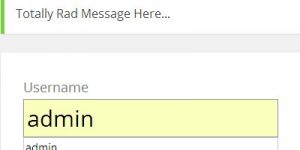Comment on WordPress SEO Tutorial by SEO Dave.

With the standard 10 posts per category that’s 15 pages deep, unless you have a high PR site (loads of backlinks) there’s a very good chance a significant amount of your deeper content rarely sees a search engine spider (can’t find them, some content will be over 10 clicks from home!).
I try to keep the number of posts shown in a category to under 20 and try to keep the number of page 2, 3 category to as low as possible and of course don’t forget about siloing your categories (keep the posts within a category to a strict theme). With your site for example I’d rather have 30 categories with on average 40 posts a category with the number of posts shown per page set to 20 which would result in most categories going 2 or 3 pages deep than your current setup of 15 pages deep.
This would have a sitewide impact, posts that are currently getting very little link benefit will get significantly more and those that get most link benefit could see significantly less. So there’s going to be ups and downs in current SERPs, I would recommend compiling a list of the pages that gain most traffic and add them to a custom menu and add them as a sitewide widget so they don’t loose their current internal backlinks. Basically if you have a post that with your current setup has a sitewide link and you change it so it only has one link from page 2/3 of a category it might loose rankings.
I bought this site a Mobile Phone Reviews site last year and reorganised it.
157 posts
10 categories
15 posts shown in a category and I tried to silo the theme of the category.
Categories range from 8 to 15 posts per category (most are around 10-12) meaning there are no page 2 categories.
Since I own over 100 domains I don’t have the time to spend reorganising sites to the level I’d suggest for a webmaster with one site. If I had the time I’d push posts that gain no search engine traffic because they aren’t really targeting SERPs into categories with more than the ideal number of posts so they get even less link benefit. I’m sure you have lots of posts that don’t really target anything, in a perfect SEO world they either need targeting at some SERPs (a rewrite which takes time) or partially removed from the site so they don’t waste too much link benefit and don’t water down the siloing of the categories they are linked from.
For example if you went with around 20 categories, 20 posts per archive page and designate 4 categories to push less important posts into (100 posts per category for example) the number of posts in your ‘important’ siloed categories that are targeting SERPs is dramatically reduced: 400 posts in the unimportant categories means 800 in the important categories, 800 posts into 16 categories = 50 posts per category, if set to 20 posts shown per category it averages 3 pages deep which is similar to having 30 categories and evenly spreading all posts. In the real world you won’t get perfect numbers, keep them in mind and will help spread link benefit more efficiently.
What is Siloing? Not familiar with link siloing, basically you theme an entire site or section of a site (I do the latter) so it only links to related content. WordPress categories are ideal for siloing, try to avoid adding unrelated content to any of your important categories. You can also see from this why I avoid the over use of tags, many WordPress users will add their posts to 5+ tags and by doing this there is no siloing within the tags.
David


More Comments by SEO Dave
WordPress SEO Techniques
How to Noindex Paged WordPress Categories and Tags
Before I explain how to noindex paged categories and tags, first going to cover some basic SEO misunderstandings.
If you use a WordPress theme like the Stallion SEO Theme your tags, categories and other WordPress archives will use post excerpts. Have …
Continue Reading WordPress SEO Guide
WordPress SEO Techniques
Whitehat SEO PR Sculpting : Delete WordPress Tags and Categories with NO Search Engine Traffic
If some WordPress tags get search engine traffic keep them and keep the same layout, but delete the tags that get no traffic.
This way your tags with traffic loose no internal backlinks and you waste no link benefit on tags …
Continue Reading WordPress SEO Guide
WordPress SEO Techniques
WordPress SEO Categories and Tags Optimization
I don’t use WordPress Tags because in structure they are the same as Categories.
A lot of webmasters overload their sites with Tags/Categories which means they need more link juice to power their sites SEO. You want most of your SEO …
Continue Reading WordPress SEO Guide
WordPress SEO Techniques
Google Sitelinks and Meta Descriptions Tag
For both questions I’ve not done anything special to achieve this, left it to Google to automatically set the meta description and the Google sitelinks. So what you see is what Google thinks are the best meta descriptions and sitelinks.
Stallion …
Continue Reading WordPress SEO Guide
WordPress SEO Techniques
SEO Impact of Font Sizes
That requires editing CSS files, each colour scheme and layout have their own CSS files, one for the colour scheme and one for the layout, the current two files your site uses are
/wp-content/themes/stallion-seo-theme/colors/layout-310r.css (layout)
/wp-content/themes/stallion-seo-theme/colors/style-brown.css (colour scheme)
So those are the two …
Continue Reading WordPress SEO Guide
WordPress SEO Techniques
WordPress Category Excerpts
The WordPress excerpt replaces the default snippet of text you see, the links to the post remain. So just a way to make your categories unique/SEO’d.
I’m sure there are ways to replace the category with custom content and a link …
Continue Reading WordPress SEO Guide
WordPress SEO Techniques
SEO of WordPress Categories
WordPress categories can gain SERPs in their own right, I link to my categories all the time from relevant pages. What I link to/from is based on what the content I’m linking from, regularly link directly to categories on other …
Continue Reading WordPress SEO Guide
WordPress SEO Techniques
WordPress Static Pages
If you want articles not to show on the home page you have the option of using WordPress Static Pages (“Pages >> Add New” instead of “Posts >> Add New”).
Static Pages (like an About Page) are only added to the …
Continue Reading WordPress SEO Guide
WordPress SEO Techniques
Matt Cutts – Google Over SEO Optimized Ranking Algorithm
Listened to the Podcast, lets see if I can link it direct in a comment for others to listen to:
Information from the PodCast:
All those people doing, for lack of a better word, over optimization or overly SEO – versus those …
Continue Reading WordPress SEO Guide
WordPress SEO Techniques
Social Media Metrics and Over SEO Optimized Sites
Which Matt Cutts talk was you listening to?
I have to admit I don’t like using social media for promotion, to date it’s been severely disappointing, I’ve got thousands of Twitter followers and auto Tweet many sites, have around 2,500 Google+ …
Continue Reading WordPress SEO Guide
WordPress SEO Techniques
WordPress Themes and Search Engine Optimization of Headers, H1, H2, H3, H4
There’s no hard rules on the exact number and ratio of headers to use because the larger an article more scope for header usage, you wouldn’t add 10 different headers (various H*s) to a 250 word post for example, but …
Continue Reading WordPress SEO Guide
WordPress SEO Techniques
WordPress SEO Cache Plugins : WP Super Cache vs W3 Total Cache
WordPress Cache Plugins are a must use WordPress SEO plugins for most sites and which one WP Super Cache vs W3 Total Cache is a very good question and I’m afraid I don’t know the answer :-)
I use WP Super …
Continue Reading WordPress SEO Guide